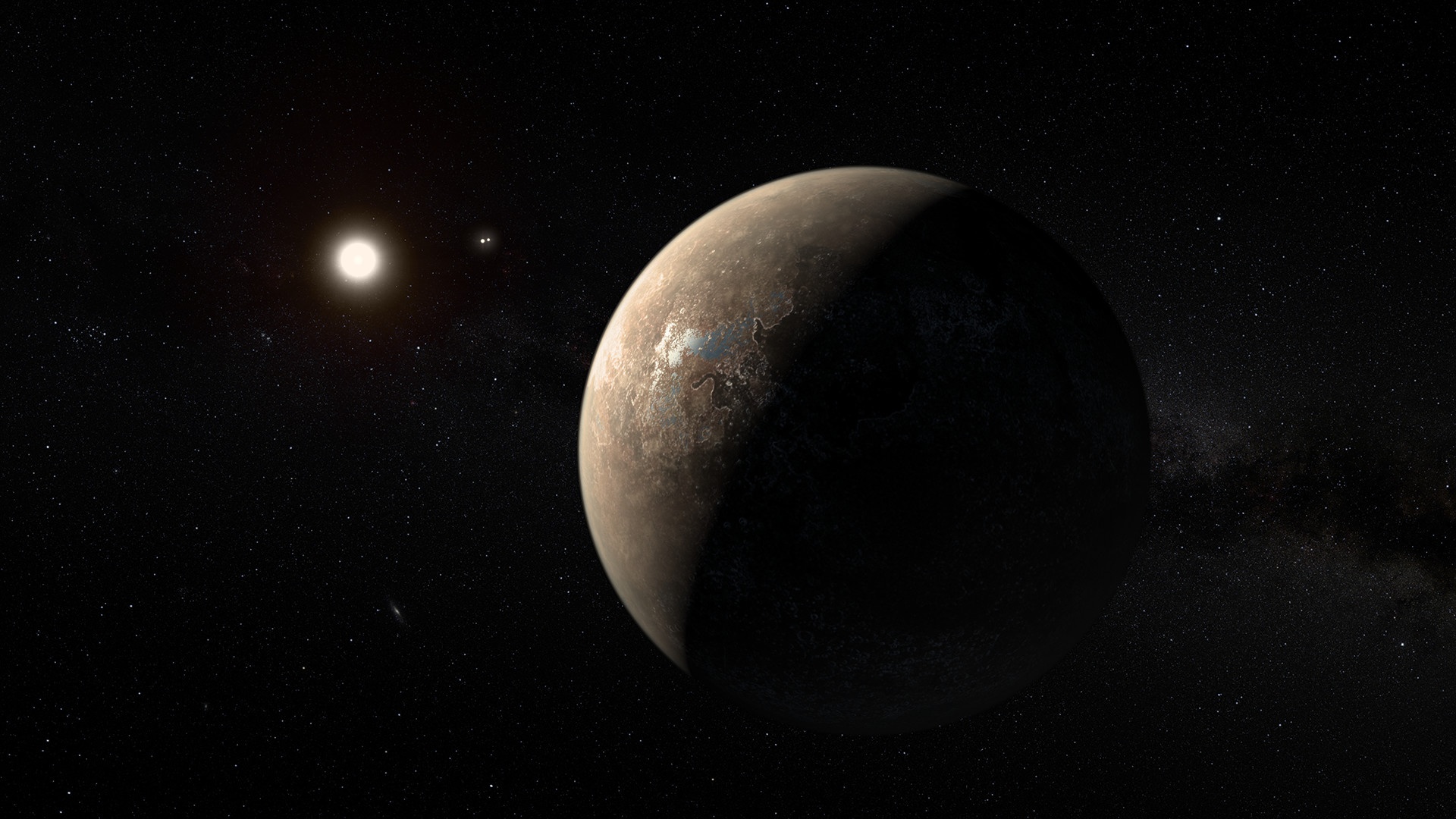Closest star to our solar system:
Have you ever gazed at the star-dusted canvas of the night sky and wondered if we’re alone out there? Well, get ready for a mind-bender! Just 4.24 light-years away, nestled in the constellation Centaurus, lies a fascinating star system that holds one of the closest planets to our Sun – Proxima Centauri. But before you start packing your bags for an interstellar vacation, hold on tight! This fiery red dwarf holds mysteries both exciting and harsh, offering clues about the potential for life beyond our cosmic backyard.
Meet the Alpha Centauri Family
Proxima Centauri isn’t a solo act. It’s part of a three-star system, where the dazzling binary pair Alpha Centauri A and B steal the show. Think of them as the charismatic siblings, always visible to the naked eye. Then, tucked away like the quiet, introspective cousin, we have Proxima Centauri, a faint red dwarf star. Don’t let its dimness fool you; it’s the closest star to our Sun, making it a prime candidate for harboring Earth-like planets.
Red Dwarfs: Not Quite Goldilocks Material
But hold your horses, space cowboys! Red dwarfs, despite their abundance in the galaxy, aren’t exactly ideal landlords for alien life. Imagine them as grumpy uncles: dim, unpredictable with sudden outbursts, and often lacking strong magnetic fields – crucial for shielding planets from harmful radiation.
Exoplanet Hopefuls
But hey, even grumpy uncles can surprise you! Proxima Centauri boasts not one, but two confirmed exoplanets – Proxima b and d. The excitement comes from Proxima b’s location within the star’s “Goldilocks zone.” Picture this: a cozy zone where temperatures might allow liquid water, the elixir of life as we know it, to exist on a planet’s surface. Sounds promising, right?
Reality Check: Don’t Pack Your Spacesuit Just Yet
Unfortunately, the story doesn’t end with a happily ever after. Just because a planet hangs out in the Goldilocks zone doesn’t guarantee it’s a tropical paradise. Proxima b is tidally locked, meaning one side eternally faces the scorching sun while the other chills in perpetual darkness. Imagine an endless barbeque on one side and a permanent freezer on the other – not exactly ideal for a picnic, even for the most adventurous spacefaring souls.
Cosmic Rollercoasters
And that’s not all! Red dwarfs, like grumpy uncles, have a bad habit of throwing temper tantrums. They erupt in unpredictable flares, bathing their planets in deadly radiation that could fry any Earth-like life forms quicker than you can say “cosmic sunburn.”
So, Proxima Centauri: Earth 2.0 or Cosmic Bust?
While the discovery of exoplanets in habitable zones is mind-blowing, our red dwarf neighbors don’t seem to offer the cozy comforts of home. However, let’s not lose hope! The universe is a vast and uncharted playground, filled with countless mysteries waiting to be unraveled. Perhaps another star system holds the key to life as we know it, or maybe something entirely unimaginable awaits us out there. Until then, let’s appreciate our unique oasis, Earth, and keep our cosmic dreams alive, fueled by the endless possibilities that twinkle in the night sky.
Bonus Skywatching
Don’t miss the dazzling Geminid meteor shower, peaking December 13-14! Witness shooting stars streaking across the constellation Gemini, remnants of asteroid Phaethon, the sun god’s fiery son. And keep your eyes peeled for stunning Venus in the dawn, majestic Jupiter dominating the night, and Saturn gracing the southern horizon. Clear skies and happy stargazing!
#AlphaCentauriExploration #CelestialJourney #ProximaCentauriExoplanets #HabitableZoneWonders #StellarConstellations #RedDwarfChallenges #GeminidMeteorShower #NightSkyWonders #SpaceDiscoveries #AstroAdventures
For more captivating moments and updates, CHECK OUT-
- NASA Exoplanet Archive: Explore the latest updates on Proxima Centauri b and other exoplanets: https://exoplanetarchive.ipac.caltech.edu/
- SPACE.com: Check out their coverage of current space news, potentially involving Proxima Centauri: https://www.space.com/
- Check out our latest insights on- OSIRIS-REx’s Cosmic Triumph: Unlock Bennu’s Secrets Now!
